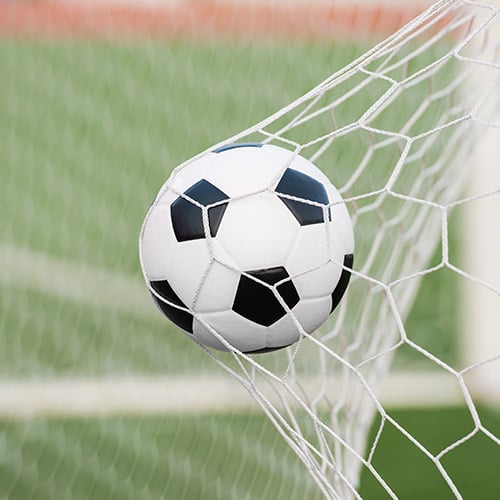In the world of sports and coaching, there are many ideas surrounding learning and the brain that are thrown around. For example, you might have heard the notion that everyone has a preferred learning style.
Many of these are pseudoscientific, meaning they are falsely claimed as being based on scientific method, when in fact they are not. We looked at a study conducted on the prevalence of these among sport coaches to see what they found.
Why would you use them?
Coaches often feel the pressure of wanting players to be successful. This means when new coaching ideas come out or strategies to help enhance performance are published, coaches are interested and are continually searching for new advantageous ideas. Even though this is based on good intentions, it means that there can be an increased vulnerability to pseudoscientific ideas.
Interestingly, the research paper also found that coaches with better knowledge of the brain were more likely to believe in neuromyths. Therefore, this is especially important for those of you interested in the brain…
What myths does the research paper mention?
Learning styles
This is one of the most researched neuromyths. It refers to the idea that everyone has a preferred learning style. The most common theory is the “VAK” model, which suggests there are visual leaners, auditory learners and kinaesthetic learners.
However, there is no compelling evidence suggesting this approach is any more effective – in fact, focusing on these may even be harmful and push athletes away from valuable learning experiences. Read more about this here.
Neurolinguistic programming (NLP)
This approach suggests that eye movements give insight into thought processes, that certain language patterns can influence others’ behaviour, and that the skills of experts can be learned when their unconscious thought processes have been identified and coded.
However, the research paper suggests that there is a lack of serious research in support of those claims.
Brain-based approaches
These include programmes that prescribes movements designed to improve the integration of specific brain functions with body movements. However, the research paper suggests that the foundational principles behind these approaches have no empirical support.
Myers-Briggs Type Inventory (MBTI)
This is a personality measure that is based on the theory of psychological types by psychoanalyst Carl Jung. It was adapted to be a test for personnel selection. It links personality to job performance and suggests different vocations favour different personality orientations.
However, several concerns have been raised about its use. The research paper suggests that there is a serious worry is its reliance on Jung’s typology of personality, which has long been discarded by psychological science.
Which ideas do coaches actually use – and should they?
The researchers asked which learning-based and brain-based ideas they use frequently. The most common beliefs (some true, some false) included:
- Goal setting – Setting achievable but challenging goals help you learn.
- Learning styles – There are different styles of learning which are suited to some people more than others.
- Direct instruction – The stage or age of an athlete determines how you coach them or how athlete centred you need to be.
- Demonstrations – This offers the athlete visual pathways to the kinesthetic learning of the skill.
- Growth Mindset – The belief that your intelligence, ability and performance aren’t fixed but can be improved.
Do you follow any of the above? Interestingly, coaches agreed with 41% of the myths. These are the main myths that coaches mistakenly agreed with…
- “Individuals learn better when they receive information in their preferred learning style” (e.g. visual, auditory, kinaesthetic) – There is no evidence to back up the theory behind learning styles.
- “Differences in hemispheric dominance (left brain, right brain) can help explain individual differences amongst learners” – 42.5% of coaches falsely believed this was true.
- “Short bursts of coordination exercises can improve the integration of left and right hemisphere brain function” – Half of the coaches believed that this is true, but there is not actual evidence to prove this.
- “Children are less attentive after consuming sugary drinks, and/or snacks”
What do we know that works?
But it’s not all myths. So, what are the areas you should actually focus on, and how can you use them?
Cognitive Load
Cognitive Load Theory highlights how working memory has a limited capacity. Working memory is where we hold and process new information – for learning to take place, this information has to be transferred to the long-term memory.
However, there is a bottleneck between the two, meaning that information that doesn’t get transferred across is ultimately lost and forgotten.
Cognitive Load Theory is all about acknowledging this and presenting information to athletes in a way that aids and accelerates that transfer to long-term memory. Learn more on using Cognitive Load Theory as a coach here…
Rosenshine’s Principles of Instruction
Rosenshine's Principles of Instruction have the potential to revolutionise coaching and they are definitely something coaches should be aware of.
These principles are underpinned by cognitive science and can help anyone learn anything much more effectively, especially in sport. They include things such as reviewing learning at the start, asking lots of questions and using models.
Check out our coach's guide to Rosenshine’s Principles of Instruction to find out more.
Psychological safety
Psychological safety has been defined as a belief that a team feels safe to share “interpersonal risk-taking, such as asking for help, admitting one’s errors, or seeking feedback from others”.
Athletes in a psychologically safe environment are genuinely interested in their teammates, have positive intensions towards one another, as well as a mutual respect for others’ competence, especially when mistakes are made.
If you’re not sure what psychological safety actually means, we explain it here – and to learn how to create a psychologically safe environment, check out our 10 top tips here.
Resilience
Resilience is the ability to withstand pressures and adversity, maintaining performance and well-being through difficult situations.
Research suggests that the ability to persevere and overcome setbacks is a key component in helping Olympic champions achieve their goals. Team resilience is also important, and research has found that when teams focused on improving it, their performance improved as well as team members’ well-being.
For tips on how to improve resilience, we have blogs on both individual resilience and team resilience.
Final thoughts
So, it is clear from the research that coaches need to be aware of these pseudo-scientific ideas and neuromyths being thrown around. The researchers concluded that the results found were substantial enough to “warrant concern” as these methods will be shaping coaching methods and beliefs.
Therefore, take note of the myths outlined above as these are most commonly believed by coaches to be true, when in fact they are not. Be careful to not believe everything you see, if you are not sure, check to see if there is empirical evidence to back it up or if it has just come from an unreliable source.





